Why Your MVP May Never Launch, and How to Avoid It
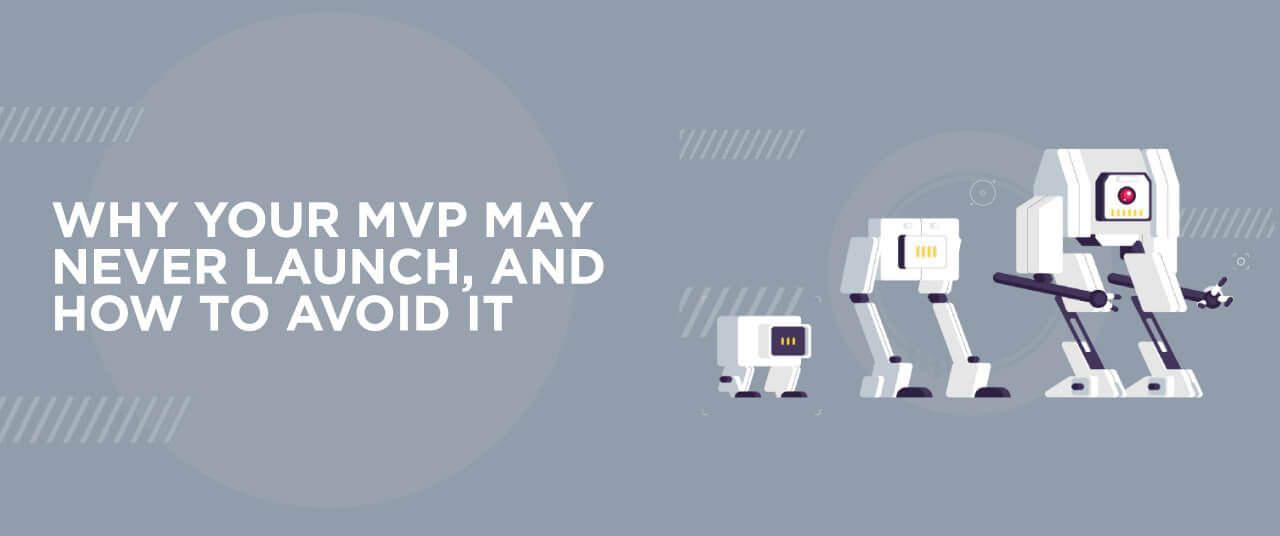
Almost everyone probably knows at least a few success stories of startups that began as MVPs, such as Spotify, Airbnb, Dropbox, and Uber. But statistics show that about 70% of startups fail within 2 to 5 years.
Given the number of startups, why do such a large percentage of them fail at the MVP development stage?
Creating an MVP is a wise step for a startup that is looking for a way to validate its business idea and ensure that the product is relevant to the market. But already in the MVP development stage, a number of things can possibly go wrong, and the team will make the same mistakes over and over again.
To prevent this from happening, and to make your MVP profitable and popular, you need to avoid the following common mistakes. This is where our guide will come into play.
Mistakes to Avoid When Building an MVP
The Project Development Strategy Is Unsuitable
If you do not build a strong project development strategy, you will face consequences. First, your development team will not understand your business goals and objectives. Likewise, your team’s motivation will greatly decrease. Also, you will waste your time and financial resources. Anyway, your MVP will fail in the market.
How to Avoid It?
First, you should determine whether there is a demand for your product in the market. It is also important to analyze what your competitors are doing and determine how you can make your product stand out.
Then it is essential to determine the long-term business goal and metric for product success.
Also, a good practice is to map out the user journey to understand how you can design your software in a way that is user-friendly. Once you have worked through the user flow, you need to create a pain-and-gain map. This allows you to identify all the user’s pain points and the benefits the user would receive from addressing each one. We recommend organizing the pain-and-gain map as a diagram.
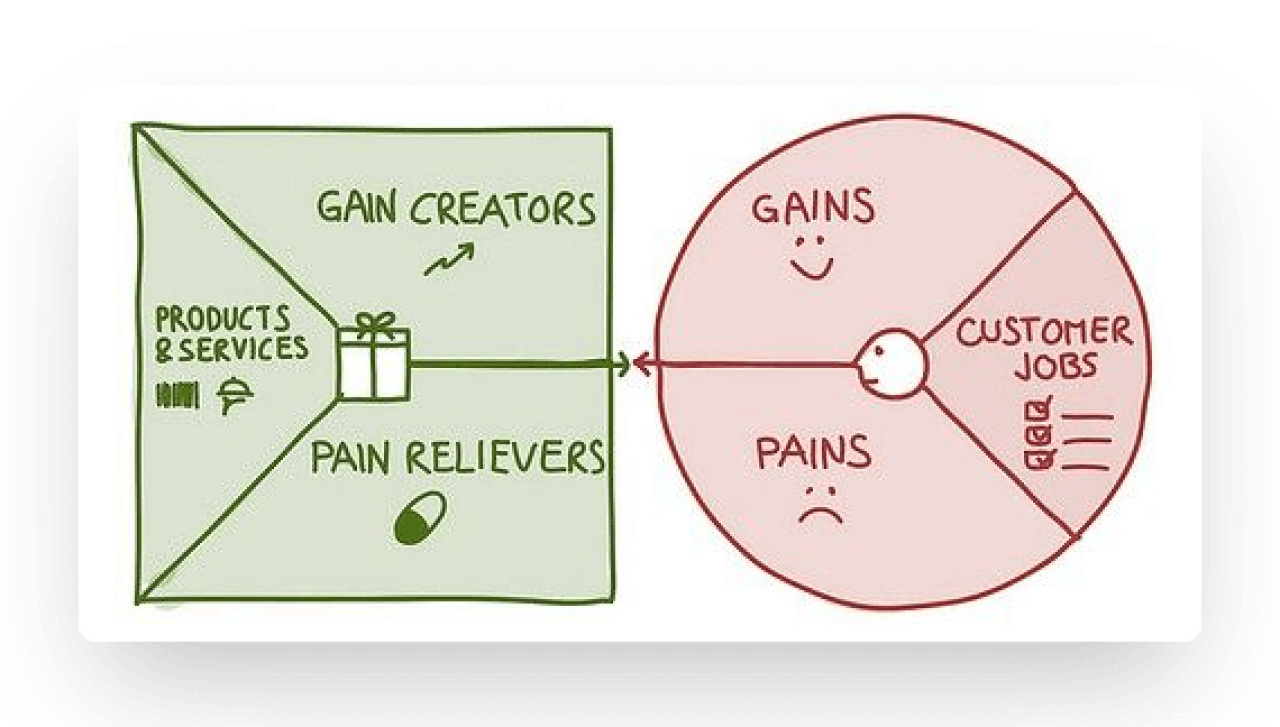
Incorrect Priorities and Focus
Quite often, startups release a half-finished product to the market, calling it an MVP. This is a terrible mistake that leads to a product with an awful user experience.
Note that any product you launch should be technically flawless, and the user experience should engage people in a way that keeps them coming back for it over and over.
How to Avoid It?
Try to overcome the urge to create a dozen low-quality features when what you really need are two awesome features. Remember, the goal of the MVP is not to get the product up and running before it’s ready, but to test how viable your product is with as few features as possible.
In a nutshell, the MVP is the most convenient approach to gather as much verified data from users as possible while still providing high value to the product.
Feature Creep
Feature creep is a pitfall that many startups fall into when creating MVPs. It means that the number of features you plan to create gets out of hand.
Feature creep can happen for many reasons:
- For example, your competitor has added a certain feature, and you feel like you should create that too.
- Or you just want to create that delightful feature, even if it’s not required to prove your value at the MVP stage.
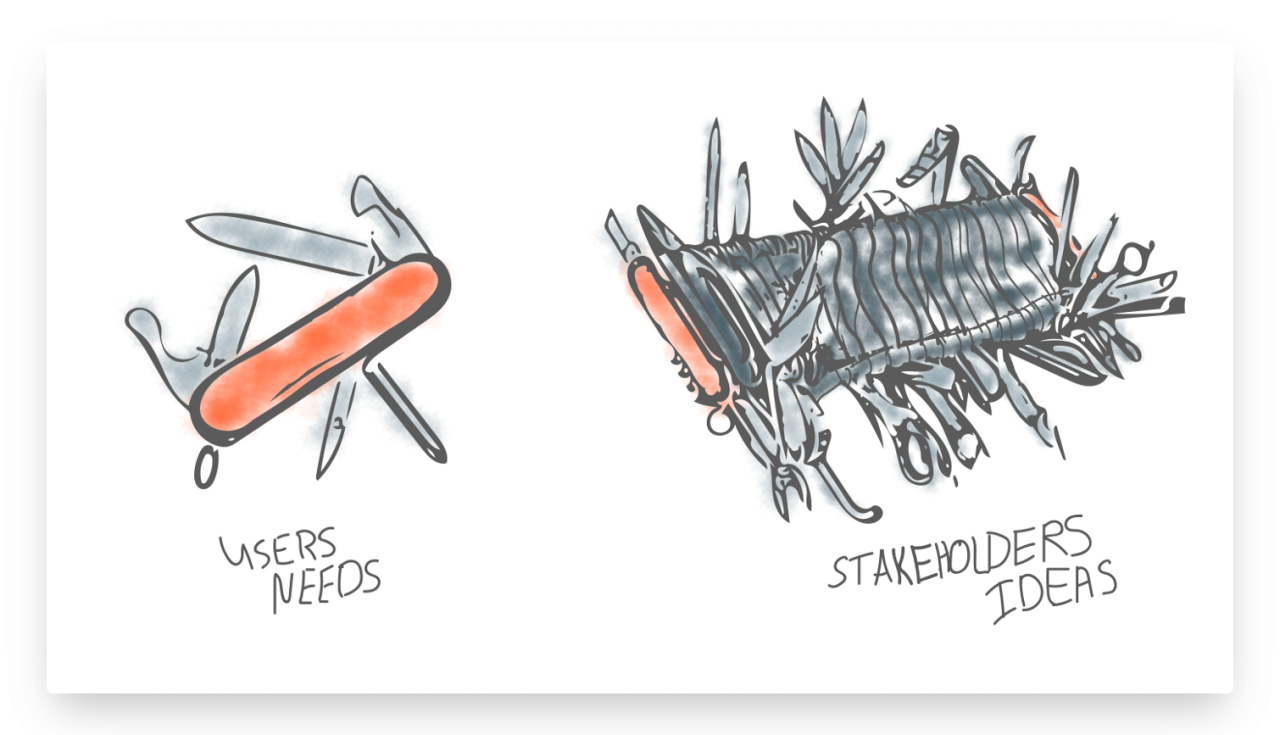
Note that feature creep increases not only your costs, but also your time to market.
How to Avoid It?
First, let’s figure out how to find out if you’re implementing too many features. Below are three key signs that it’s time to worry about feature creep.
- Your initial MVP backlog has increased by more than 30%.
- You’ve moved away from your primary user flow or focused on the needs of your secondary target market.
- You’re having trouble writing a user story for a new feature.
Then, to avoid the feature creep trap, you should focus on the value and challenges your users face. By doing so, you can create an MVP with a few features that allow you to prove that your solution is the most suitable on the market.
Starting with an Extremely Simple Product
If you’ve read through the above reason, you might falsely conclude that the best option is to reduce your project’s features to the bare minimum.
But imagine that you focused on simplicity and developed an application consisting of a single login and registration screen. In fact, you’ve implemented a minimum of features, but they’re not viable. And that is a mistake.
A successful MVP is a product that is minimal and viable, and both of these adjectives are equally important.
How to Avoid It?
The basic idea is that you should reduce the functionality of your project to its viable minimum. To understand what minimum viable features should be implemented, we recommend you answer the following questions:
- Why is your product innovative? Which features make it groundbreaking?
- Why will users pay for your solution? Which features will address their needs?
And these answers will help you consider which features you should implement first.
Skipping the Prototyping Stage
By prototyping, you can refine your MVP idea through user feedback and streamline the development process. This will also help you convince investors that your project is worthy of funding.
If you decide to skip this step, your MVP may not work out, and investors may decide to cut funding before you have time to complete the project. Also, you may lose the chance to get feedback from users at an early stage.
How to Avoid It?
To create a prototype, you should design the interface architecture with the main screens and elements, as well as their interactions.
Next, you should develop low-fidelity sketches. You can just draw them with a pencil on paper. After that, you can hire a UX/UI designer to help you develop high-fidelity wireframes to better express your idea.
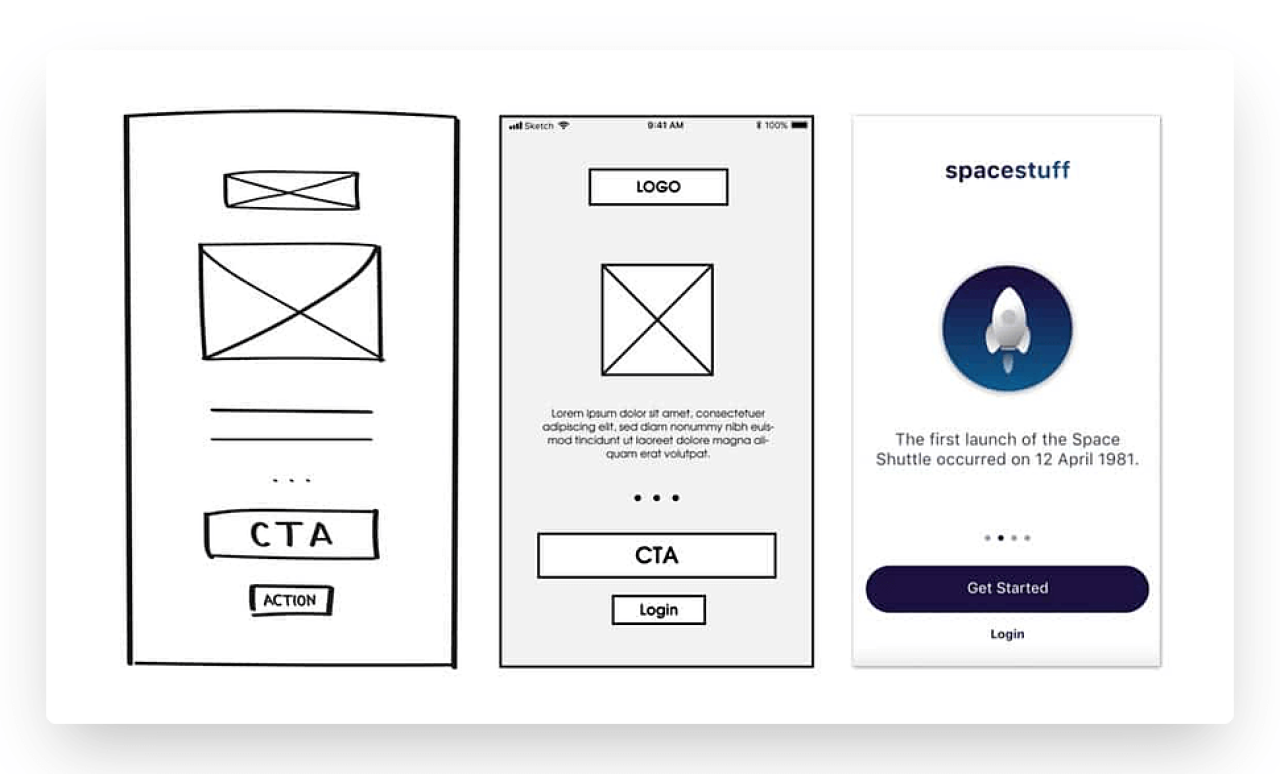
When you combine all these screens and make them clickable, you’ll have an effective clickable prototype.
Market Research Is Not Conducted
Startups often assume that they know what the market wants better than the actual target audience. They guess that users like or dislike something without even questioning them.
Or if they conduct research and don’t like the results, they just decide to ignore them. Startup owners justify their actions by claiming that the results of the market research are wrong due to some flaw in the design of the research. This is also a serious mistake.
How to Avoid It?
Most startup owners conduct market research since it is an essential step in business. But it is not enough.
You should also be ready to integrate the results into your MVP, even if you don’t like them. Let’s assume that the results of your market research look shady or make you concerned. Rework the research and conduct it again—but in no way ignore it.
Ignoring User Feedback
Gathering user feedback is the main aim of creating an MVP. Ignoring this means that you have stopped caring about the very reason you started creating the MVP. This often happens when you are too focused on the solution rather than the problem to be solved. This can lead to you developing a product that no one likes.
Always remember that the MVP is created to prove whether the solution you have in mind will actually solve the problem of your target users.
How to Avoid It?
When evaluating user experience and collecting user feedback, keep the following things in mind.
You should focus on a specific market segment. Note that a software solution is never one-size-fits-all.
You shouldn’t ask either too many or too few questions. Overloading users with surveys doesn’t seem like a good idea. They’ll become tired of your annoying behavior and stop responding to you. But if you don’t get the answers you want, the whole process will become useless. Ask only those questions that will actually give you the data you need to develop a better product.
We also suggest you try rewarding users for their feedback. For example, you can offer them to try your product for free for each completed form. Instead of asking all users for all answers, you can try dividing users into small groups. Ask each group a certain number of questions about specific features, design, overall feeling, or future expectations.
Overestimating User Feedback
Keep in mind that your product may not appeal to everyone. If you try to take into account every comment, complaint, and recommendation, you might deploy too many features—and we already know the pitfalls of this. If you try to satisfy all users at once, you’ll endlessly redesign your product, and you’ll end up losing the big picture or running out of budget. The development team will also become quite tired of constant changes in requirements.
How to Avoid It?
First, analyze all the feedback, divide it into groups, and focus on those groups that support the purpose of your business. Also note that not all the users know what they want, which is why you should review and rank feedback.
If you feel that work is stagnant or your software is changing too often, you should take urgent action before your MVP project fails.
Your Target Market Is Too Broad
Sometimes you may catch yourself saying, “Anyone can be a customer!” when asked about your target audience. As great as this all-encompassing approach is, it’s not the best option. Ultimately, it can lead to a poor user experience and a product that is virtually unacceptable.
Let’s say that one of every 10 persons in your possible target audience really needs your product or service. That means you need to focus on that one person, not the nine who aren’t interested.
How to Avoid It?
We suggest you create your MVP with a specific group of users in mind first. This is the best option for gathering targeted, quality feedback that will clearly define your product roadmap. After that, you can gradually expand your audience.
For example, the first version of Slack was created to address the need for a SaaS point for in-team communication and file sharing. Only as the software became popular within the team was it scaled to other companies.
Reducing Time to Market by Losing Security and Privacy
Research has shown that consumers are willing to share information with a brand which will protect it. However, in the race to market, you can’t skimp on such things as privacy and security. If you put your customers at risk, no matter how minor it may seem, you could ruin your product and possibly your startup.
How to Avoid It?
First, you need to understand what data is being collected, transmitted, and stored; what parts of it need to be protected; and the best approach to protect it.
Consider whether you will offer federated authentication or use your own—or both.
Try to minimize the attack surface. Determine, for example, how many entry points can be used to attack the application. Keep a record of all the third-party libraries and components you use.
If you have little or no experience in this field, we highly suggest you bring in an expert.
Paying Too Much Attention to Technical Quality
Every startup strives for scalability. But trying to achieve feature perfection from the start for optimal performance is not only overpriced, but also inefficient.
Creating all the elements without using existing libraries will lead to spending too much and achieving too little. Also, if your MVP development is estimated to take more than 3 months, very often this is a clear sign that you are overzealous.
How to Avoid It?
To prevent MVP overengineering, ensure that all team members are on the same page when it comes to MVP goals and hypotheses you want to test.
Also, don’t avoid using off-the-shelf libraries and components. They will speed up the development process and free up some budget.
If you are working with a third-party software developer, ask them to provide you with different ways to implement your MVP. Carefully review and compare options.
Inappropriate Development Method
There are two most popular project management methodologies: Waterfall and Agile.
If you opt for the Waterfall model, you should keep in mind that it involves certain development phases. You can move to the next one only if the previous stage is fully complete. Thus, Waterfall does not involve making changes on the fly, and so you should define all the requirements for the project before starting the development process.
Let’s say, to test the project for bugs or change the design in the future, you will have to wait at least a few months until your product is ready. But sometimes that happens, someone else may have already launched a similar product.
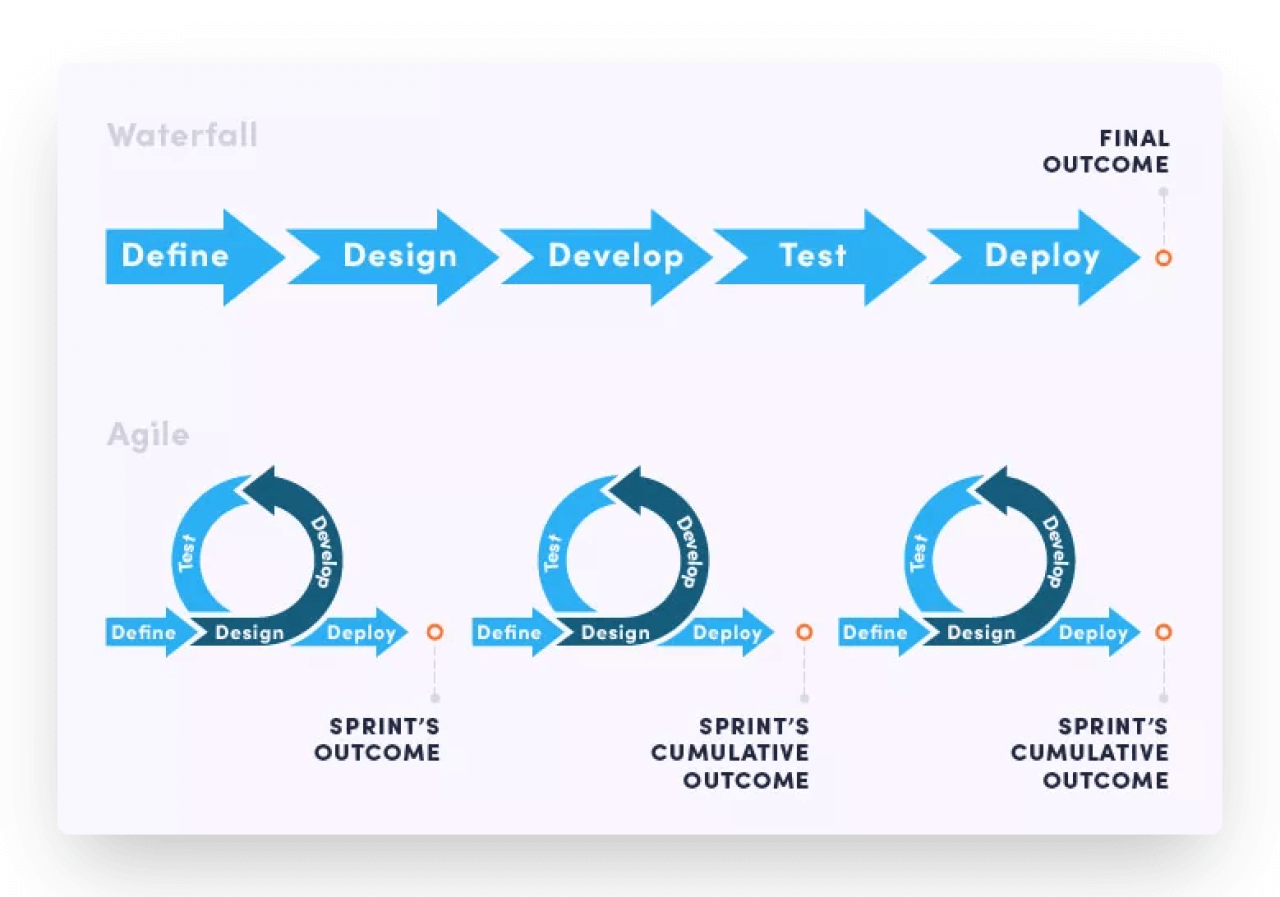
How to Avoid It?
In most cases, you can choose between Agile and Waterfall. Their different characteristics will affect the way the project is implemented. Both solutions have their strengths and weaknesses.
But, when it comes to MVP development, you should opt for Agile. Also, we recommend you prefer the Time & Material payment model. MVP development always involves changing requirements, and if you select a fixed-price model and Waterfall, you won’t be able to implement any changes.
Using an Agile development model, you can iterate quickly without process-based constraints. Each product iteration occurs in “sprints” tied to short-term results.
Lack of a Skilled Development Team
Whatever technologies and approaches you apply, if you don’t have a skilled MVP product development team, the project has little chance of succeeding. To create an effective product, your team should optionally consist of a project manager, business analyst, designer, developer, and QA engineer. Otherwise, you may face issues involving missing deadlines, hiring additional specialists, or poor feedback analysis.
How to Avoid It?
To avoid project failure, you should search, screen, and select suitable options, evaluate them and, finally, choose. Below, we have listed the most crucial points to consider when choosing a software development company:
- Research their portfolios. In this way, you will be able to assess the quality of their services and whether they have enough experience to implement your idea. Also, it will help you roughly estimate their programming and design skills. Additionally, check if their projects are available in app stores, as well as their ratings.
- Read customer reviews. Reviews are a great indicator of how a company works with its customers. Visit dedicated sites like Clutch or GoodFirms to find out if the team has experience with projects similar to yours, what services it is focused on, and if it has won any awards.
- Pay attention to the company’s website. You can understand the company’s standards by analyzing content they publish on social media accounts and their website. Reading their blog, you can find a lot of important information on their work processes, working terms and conditions, collaboration model, etc.
- Pay attention to how the company responds to your messages. The faster they respond, the more interested they are in your project. Usually, they should respond to you within 48 hours. You will also see how interested they are in working with you by how many questions they ask to clarify your goals.
Start with an MVP to Roll Deep
Building a perfectly balanced MVP will increase the chances of your product being seen in the marketplace. It can also turn your idea into a profitable project. However, not all MVPs will succeed. Avoiding the mistakes listed above will help you make your MVP a hit during its development phase.
If you encounter other problems and would like help overcoming them, feel free to contact us. We have well-established processes and seasoned teams to quickly and seamlessly build your MVP from scratch.

 (5 votes, average: 4.60 out of 5)
(5 votes, average: 4.60 out of 5)


